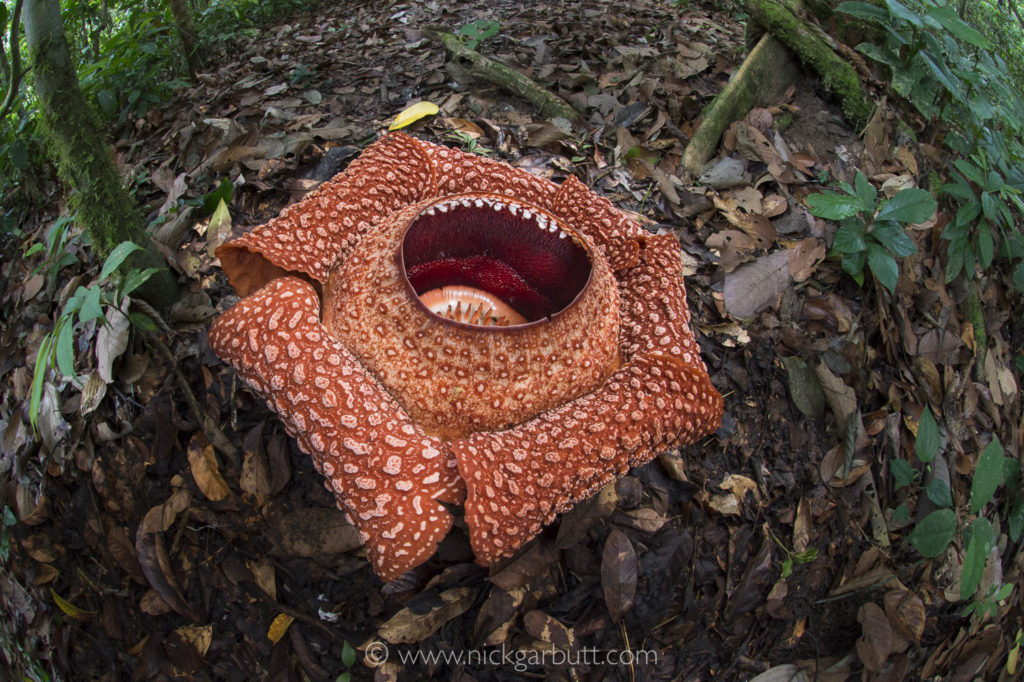Story Behind the Picture: Rafflesia, the World’s Largest Flower
Nikon D810, Nikon 8-15mm fisheye @15mm, f10, 1/2 second
My roots are firmly set in the zoological rather than botanical camp. I read zoology at university and once regarded plants as nothing more than things animals either sat in or ate. Over time my attitudes have thankfully mellowed and I’ve come to realise the exquisite beauty I’ve been missing out on. Fundamentally of course the entire ‘natural world’ (I’m reticent to use that term) is endlessly fascinating.
And within the botanical realm, I find some groups particularly interesting both as biological entities and photographic subjects. A case in point are Rafflesia, a group of parasitic species that produce the largest single blooms known (other species produce larger flowering organs which are strictly flower clusters e.g. titan arum). Rafflesia are found in the rainforests of south east Asia, with some 28 or so species currently described. The largest is Rafflesia arnoldi from Sumatra which can produce blooms just over 100cm in diameter.

Spectacular, but short lived: the bloom of Rafflesia keithii lasts less than a week and is only in 'perfect' condition like this for a couple of days.
This species is Rafflesia keithii, the largest species found on the neighbouring island of Borneo. The individual shown here was around 80cm in diameter and on the lower slopes of Mt Kinabalu. It was photographed on the third day of blooming when at its most impressive and spectacular (they begin to wither and die after 5 days). It was important to show the flower in the context of the forest environment (hence the choice of a fisheye lens), but with this in mind, lighting the photograph effectively proved challenging and required a delicate balance of natural light and flash.
Intuitively, one might think photographing flowers should be more straight forward than animals, because plants don’t move. The paradox is that this means there is absolutely no excuse for getting it wrong. For flower pictures to ‘work’ and have impact they need to be ‘perfect’ and this can take time.
Except early in the morning and late in the afternoon, when the sun is low, direct sunlight in rainforests is a killer. The massive contrast between bright, sparkly highlights and deep, dark shade makes it impossible to record detail and accurate colours across all the areas (subject and background) in a photo. The first crucial element in lighting this photo was, therefore, waiting for clouds to cover the sun and turn the natural light from ‘harsh’ to ‘soft’. Then because the forest floor of a rainforest is generally dark, it is almost always beneficial to use some fill-in flash to ‘lift’ the subject from the background. The difficulty with Rafflesia is that achieving soft light from flash on the outer flower, often results in the center of the flower being rendered very dark with all detail in the interior being lost. To solve this, I used three flash guns, two with soft boxes to illuminate the outside of the flower and a third flash, fitted with a snood to project light specifically and directly into the interior of the flower. And because, I was using a fisheye lens, mounted on a tripod very close too the flower, this required very careful placement of each flash gun to project light into the appropriate places. ‘Taking’ this shot took half a second, but the preparation and setting up probably took over two hours.
